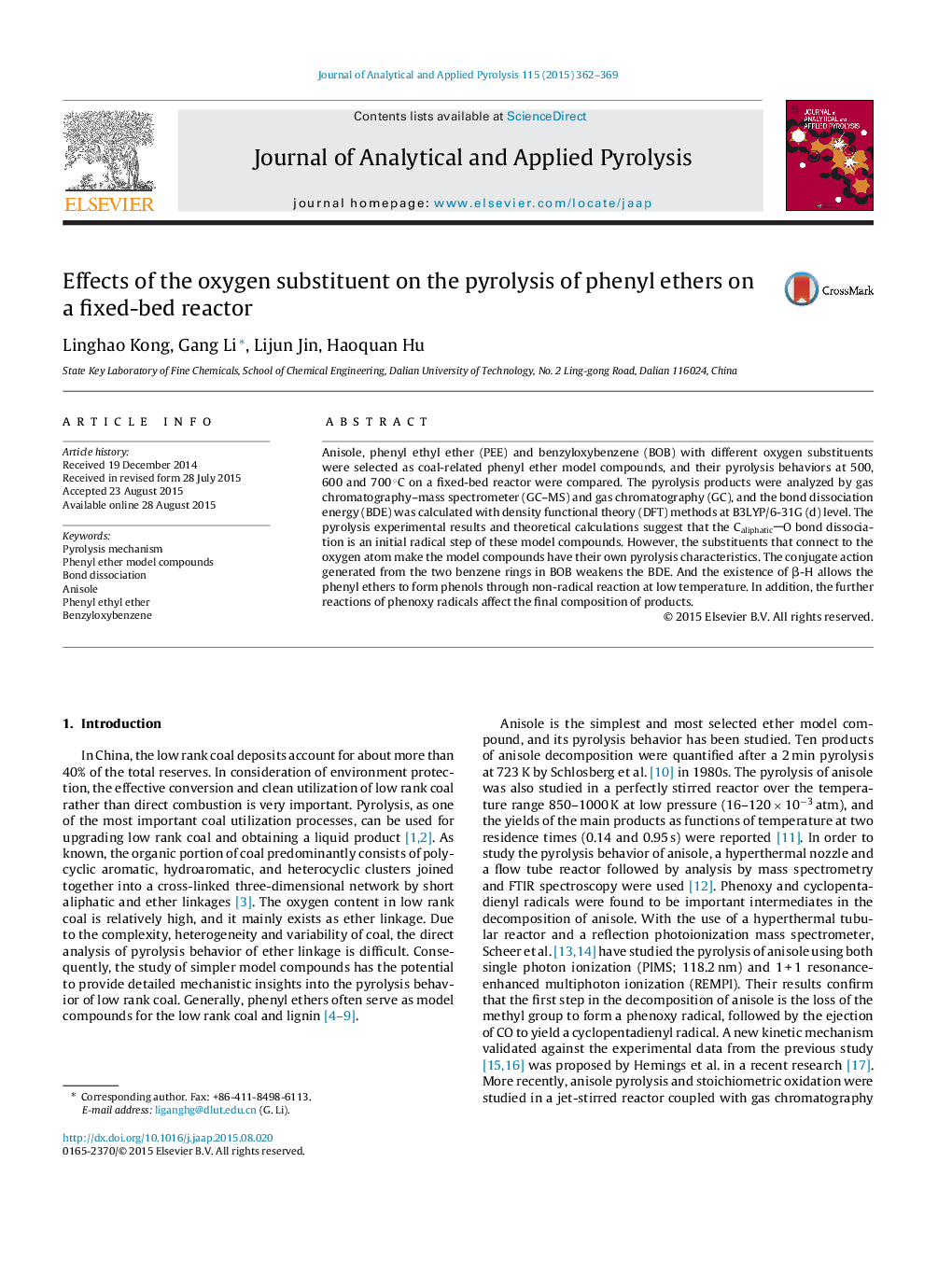| Article ID | Journal | Published Year | Pages | File Type |
|---|---|---|---|---|
| 1197111 | Journal of Analytical and Applied Pyrolysis | 2015 | 8 Pages |
•CaliphO bond rupture is the initial pyrolysis step for phenyl ether model compounds.•Conjugate action generated from the benzyloxybenzene structure weakens the BDE.•β-H may allow the phenyl ethers to form phenols through non-radical reaction.•Final product compositions are determined by further reactions of phenoxy radicals.
Anisole, phenyl ethyl ether (PEE) and benzyloxybenzene (BOB) with different oxygen substituents were selected as coal-related phenyl ether model compounds, and their pyrolysis behaviors at 500, 600 and 700 °C on a fixed-bed reactor were compared. The pyrolysis products were analyzed by gas chromatography–mass spectrometer (GC–MS) and gas chromatography (GC), and the bond dissociation energy (BDE) was calculated with density functional theory (DFT) methods at B3LYP/6-31G (d) level. The pyrolysis experimental results and theoretical calculations suggest that the CaliphaticO bond dissociation is an initial radical step of these model compounds. However, the substituents that connect to the oxygen atom make the model compounds have their own pyrolysis characteristics. The conjugate action generated from the two benzene rings in BOB weakens the BDE. And the existence of β-H allows the phenyl ethers to form phenols through non-radical reaction at low temperature. In addition, the further reactions of phenoxy radicals affect the final composition of products.
